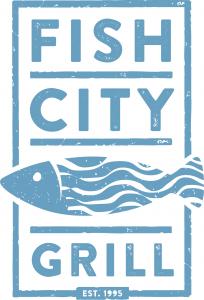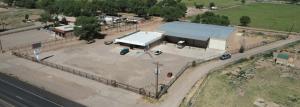The rodenticides market is anticipated to grow at a CAGR of 4.49% from US$1,112.301 million in 2022 to US$1,512.37 million by 2029.
— Knowledge Sourcing Intelligence
NOIDA, UTTAR PARDESH, INDIA, March 22, 2024 /EINPresswire.com/ — According to a new study published by Knowledge Sourcing Intelligence, the rodenticides market is projected to grow at a CAGR of 4.49% between 2022 and 2029 to reach US$1,512.37 million by 2029.
A rodenticide is a type of pesticide designed to eliminate rodents. Rodents encompass various species such as rats, mice, squirrels, woodchucks, chipmunks, beavers, porcupines, and nutria. These rodenticides serve the purpose of managing pests that have the potential to inflict harm on property, crops, and food resources. The use of anticoagulant and non-anticoagulant Rodenticides serves a singular purpose to control pests, with a particular focus on rodents such as rats and mice. Growing urbanization and the subsequent rise in population density is the primary driving force behind rodenticides market growth. According to the United Nations published report in April 2023, India’s population is projected to reach 1,425,775,850 individuals by the conclusion of April 2023. The projections also suggest that India’s population will continue to grow for several more decades. The figures are slightly surpassing China’s global record of 1.4 billion people in 2022. According to Building and Construction Authority (BCA) published report in January 2023 the public sector is projected to account for approximately 60% of the overall construction demand, ranging from S$16 billion to S$19 billion. The continuous rise in public housing projects is supported by the Housing Development Board (HDB) as they enhance the availability of Build-To-Order (BTO) flats.
Rodenticides are toxic substances created to eliminate rodents such as rats and mice. The rodenticides are available in different formats, ranging from bait traps to sprays, and are utilized in households, commercial establishments, and agricultural settings to manage rodent populations.
Numerous product launches and collaborations are taking place in the market, thereby increasing the rodenticides market growth. For instance, BASF’s Selontra® rodenticide has potentially secured a notable edge in the professional pest control industry as the sole choice authorized for specifically targeting field mice (Apodemus sylvaticus).
Access sample report or view details: https://www.knowledge-sourcing.com/report/rodenticides-market
The rodenticides market, based on type is segmented into two main categories namely anticoagulant and non-anticoagulant. Non-anticoagulant is expected to account for a major share of the rodenticide market. owning to non-anticoagulant in households with inquisitive pets or in regions where wildlife is a concern, exist superior alternatives to rodenticides. Snap traps and natural repellents provide a more expedient resolution while minimizing the potential harm to unintended animals.
The rodenticides market, based on product is segmented into three main categories namely pellets, blocks, powder and spray. Pellets and blocks are expected to account for a major share of the rodenticide market. owning to enhanced safety for pets and children due to their contained nature and gradual ingestion process.
The rodenticides market, based on end-user is segmented into four main categories namely pest control companies, warehouses, household and agriculture are expected to account for a major share of the rodenticide market. Due to minimize risks to pets, children, and beneficial wildlife, it is advisable for households and agriculture to opt for safer alternatives such as snap traps or natural repellents.
Based on geography, the market for rodenticides is expanding significantly in the North America area due to several factors. In countries like United states, Mexico, and Canada there is a growing need for rodenticides in several industries, including food service industry and warehousing and agriculture. This demand is being driven by these nations. Due to urbanization and population growth, and public health concerns.
The research includes several key players from the rodenticides market, such as BASF SE, Bayer AG, Neogen Corporation, Liphatech, Inc., Impex Europe sl, Bell Labs, Ecoclear Products, Syngenta, and SenesTech, Inc.
The market analytics report segments the rodenticides market as follows:
• By Type
o Anticoagulant
o Non- Anticoagulant
• By Product
o Pellets
o Blocks
o Powder and Spray
• By End – User
o Pest Control Companies
o Warehouses
o Household
o Agriculture
• By Geography
o North America
• United States
• Canada
• Mexico
o South America
• Brazil
• Argentina
• Others
o Europe
• United Kingdom
• Germany
• France
• Spain
• Others
o Middle East and Africa
• Saudi Arabia
• UAE
• Israel
• Others
o Asia Pacific
• Japan
• China
• India
• South Korea
• Indonesia
• Thailand
• Others
Companies Profiled
• BASF SE,
• Bayer AG,
• Neogen Corporation,
• Liphatech, Inc.,
• Impex Europe sl,
• Bell Labs,
• Ecoclear Products,
• Syngenta,
• SenesTech, Inc
Explore More Reports:
• Soil Treatment Market: https://www.knowledge-sourcing.com/report/soil-treatment-market
• Agricultural Pheromones Market: https://www.knowledge-sourcing.com/report/agricultural-pheromones-market
• Global Agricultural Machinery Market: https://www.knowledge-sourcing.com/report/global-agricultural-machinery-market
Ankit Mishra
Knowledge Sourcing Intelligence LLP
+1 850-250-1698
email us here
Visit us on social media:
Facebook
Twitter
LinkedIn
![]()
Originally published at https://www.einpresswire.com/article/697898628/rodenticides-market-is-estimated-to-reach-us-1-512-37-million-by-2029-at-a-cagr-of-4-49




